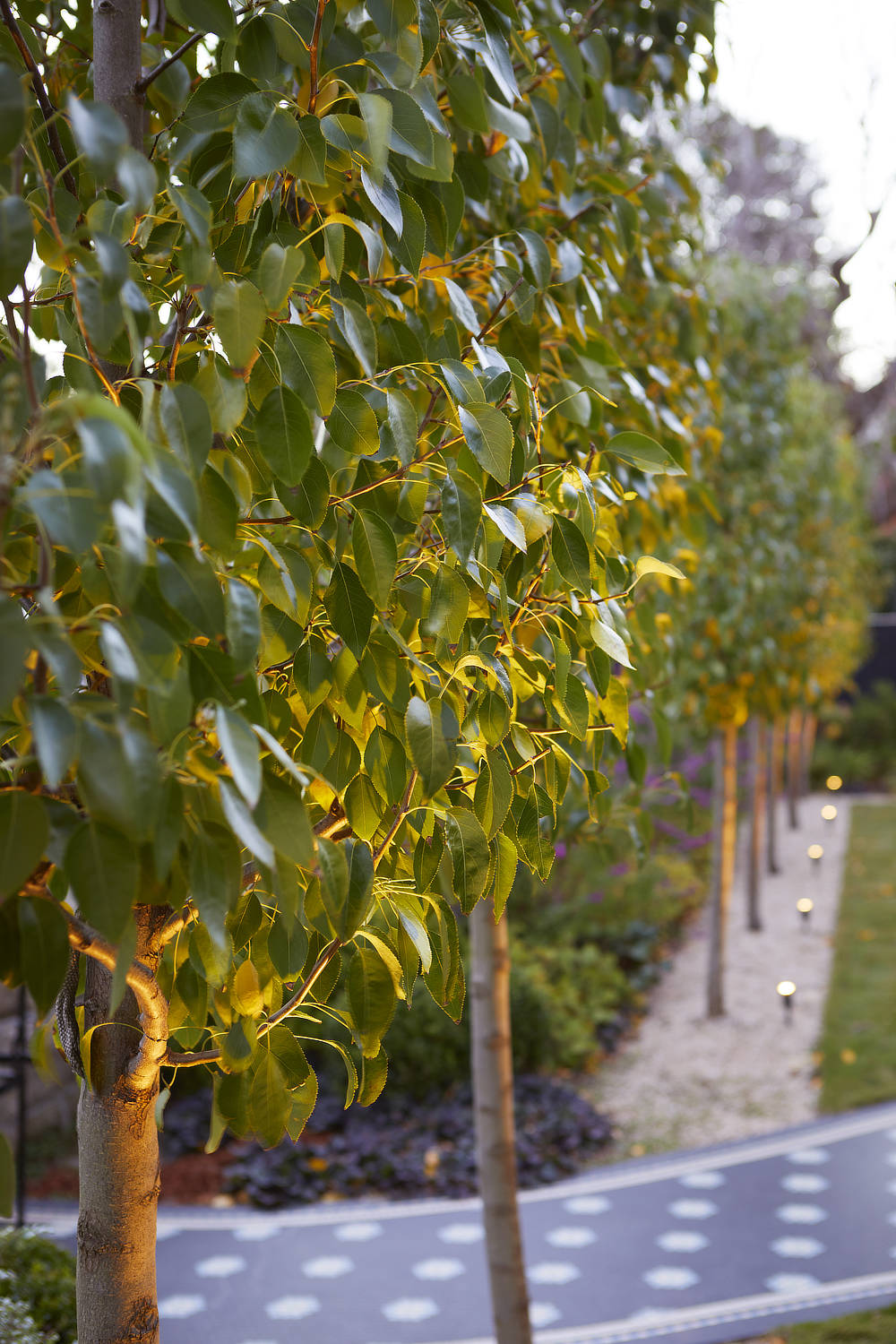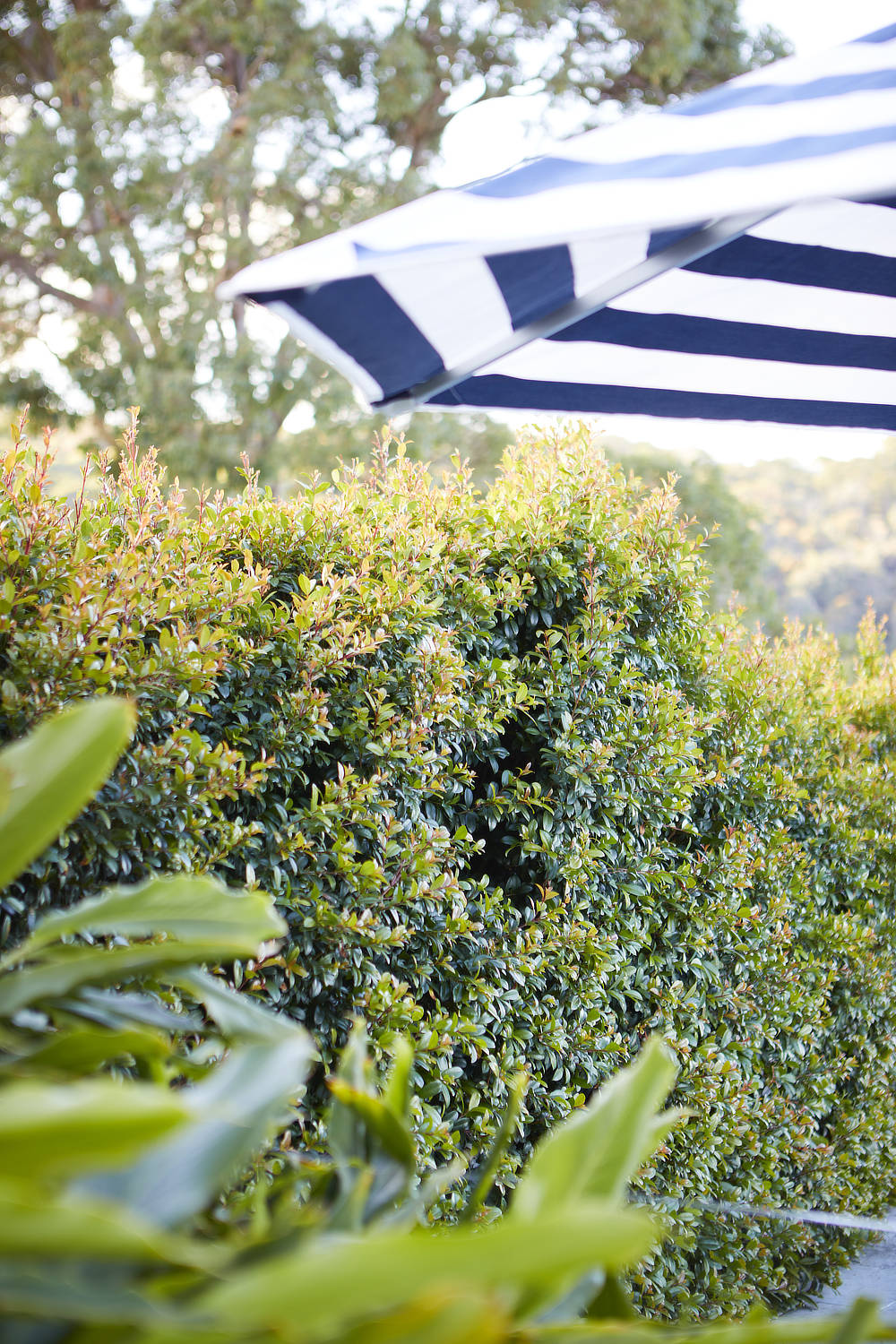Hedges are a fantastic addition to many a garden style, they help to provide boundaries, form edges to garden beds and screen unsightly views and neighbours! Hedges are often thought of as tightly clipped formal affairs however they can also be looser and shaggy providing a softer look in the space.
What are the key elements that make a great hedging plant? Well the first thing you need is a foliage dense plant, you don’t want anything with an open canopy as you will always struggle to get it to fill in. Things like buxus are great as they have lots and lots of dense foliage that knits together to give you a wall of green. If you want a looser look, plants like rosemary form a great hedge with their abundance of shaggy foliage.
The size of your hedge will depend on the plant you select, You want the plant to fill the space however you don’t want to be fighting it too much – for example trying to keep a medium sized plant as a low hedge will be a constant battle. Buxus is perfect for small to medium hedge plant, viburnum and Murraya are well suited to medium size hedges and for tall hedges look to trees like lilli pilli or conifers.
When panting a new hedge getting your spacing right is key. You don’t want to plant too closely together as it will cost a bomb and the plants will be competing with each other for water and nutrients. Plant too far apart and you will be waiting for an age to form a nice even hedgerow. For smaller hedges I use 3 plants a lineal meter, for medium hedges two a meter and taller hedges only get one plant per meter – this is a little dependant on the exact species you select.
To get a solid hedge, be it formal or informal the pruning needs to start as soon as its established and you start to see foliage growth. If you allow your plant to reach the final height you are after and then start pruning it you will end up with a sparse hedge and holes on the sides that will never fill in. When you prune a plant, you promote new growth from the point of the cut (or just below), keep pruning all this new growth and you force the plant to make even more growth – this is what gives you a lovely dense look.
As your new hedge grows and you continue to prune it you want to get to the finished shape a quickly as possible. For looser hedges this is a little easier, I like to prune these with secateurs reducing long wispy growth back and I do this on a little and often basis. For formal hedges I like to set up string lines to ensure I get nice straight level lines and the bottom of the hedge stays a little wider than the top (it’s easier to get this the wrong way around) as this will ensure light reaches all parts of the plant, keeping them dense. When setting up string lines position them two inches above the top of the hedge as this will stop you from cutting through them and use them as a refence point to ensure you don’t go too far off track.


